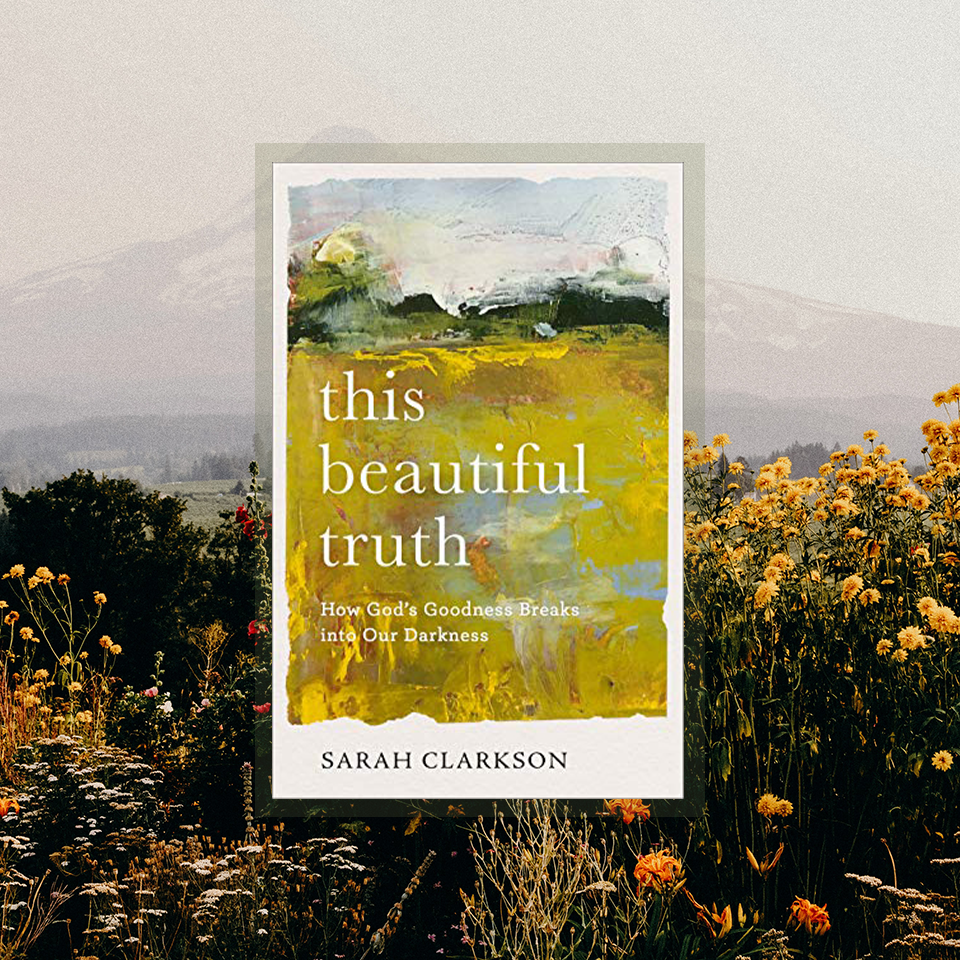One of the greatest obstacles to faith for many people is the problem of suffering. Why would a good God allow pain and grief? The power of this paradox is undeniable. Theodicy—a defense of the goodness of God in the face of evil—is perhaps most difficult when confronting the suffering of innocent children. When children are in pain, we often can’t help but wonder: Why would God allow this?
It is this most compelling challenge to faith that Sarah Clarkson tackles in her new memoir and exploration of theodicy, This Beautiful Truth: How God’s Goodness Breaks into Our Darkness. In this gripping story, the child whose suffering calls faith into question is that of Sarah Clarkson herself.
In vulnerable and heartbreaking passages, Clarkson describes how mental illness broke in and presented a rival story of brokenness to the narrative of goodness in her happy childhood. Enduring violent, terrifying, and perverse thoughts that disoriented and violated her brain due to a rare form of obsessive-compulsive disorder, Clarkson’s agonizing pain moved her to question the basic tenets of what she’d been taught about God. Could God be good if he allowed these disturbing and excruciating images to invade her mind and destroy her happiness? She needed answers.
This Beautiful Truth follows Clarkson’s journey from early childhood into her teenage years—when her mental illness became debilitating—and beyond. Raised in the United States, she hopped the pond in adulthood and began studying theology in England. But she found the long-awaited answers to the problem of suffering, although systematic and logical, ultimately unsatisfying. “We so often confront profound suffering,” Clarkson notes, “with a list of doctrinal tenets and assertions that are meant, I think, to stave off that yawning terror of inexplicable destruction. . . . We don’t want to believe that God would let evil happen to us. And yet he does.” Clarkson’s need for clarity was relieved not by analytical arguments but came from an unexpected quarter: the existence of beauty. “What if,” she asks, “in the bent and twisted darkness of our broken world, beauty is God’s theodicy? What if God can speak in creation and song, story and vision the things words, in their frailty, cannot yet bear? What if God’s hand reaches out to us clothed in beauty, and by grasping and trusting it, we may learn to walk through the darkness in hope?”
Connecting her questions to those of the biblical figure Job, an innocent man who loses everything and asks God why, Clarkson was moved by God’s conversation with Job in Scripture. She explains, “God’s answer to Job was just . . . beauty, and it was so thorough and true that Job was satisfied. It’s not that his pain was zapped away in an instant, or that his loss was made small. God did not diminish what Job suffered, but there was God’s aching request for Job to behold the kind of beauty that allowed him to live in the tension between God’s power and his own suffering, to trust that beauty, to let it speak to him of God’s tenderness and power, to walk forward into the wild country of trust.” The only answer that helped Clarkson grapple with the problem of suffering wasn’t something that could be communicated in charts, graphs, or logical proofs, but in poetry, story, a parent’s love, a friend’s warm welcome, and the glory of God’s creation—in everything that points us to the ultimate beauty.
While engaging this issue, Clarkson never dismisses the truly horrifying nature of pain. There is no pivot to a silver lining, toxic positivity, or denial of the agonizing nature of her illness. This Beautiful Truth is not a story about the end of suffering. Clarkson does not offer a narrative of relief from the agony of her OCD; instead, she shares how even in her darkest moments, God’s goodness pursued her with beauty, offering a “song of hope” amidst her pain.
Clarkson’s enchanting style is mesmerizing. With artistry that reflects her subject, beauty, she weaves together narratives of suffering touched by grace in her own experiences and then illuminates deep truths about faith, God’s loving pursuit of the human heart, and the glimmering moments that highlight our longing for beauty and our soul’s fulfillment in the source of all beauty. Clarkson writes, “Beauty came, and Beauty saved me—from darkness, from unbelief, from destructive despair, from the bad answers that obscured his goodness, from the closed horizons of grief—and this is the story I have to tell.”
It is a story well worth reading. If your faith is overwhelmed by darkness, Clarkson’s honest reflections will bolster your weary soul.
